Pittsburgh Chess Club Championship 2013, Round 3: attack, defense, and sacrifices

Round 3 of the annual Pittsburgh Chess Club Championship had me playing another very long game, the last game to finish (which it did after four hours, when nobody else was around any more except the tournament director).
For once, I am actually fairly proud of my game, in which I pressed hard with an attack and won. I have submitted the score for consideration in the “Best Attack” special prize category for the tournament.
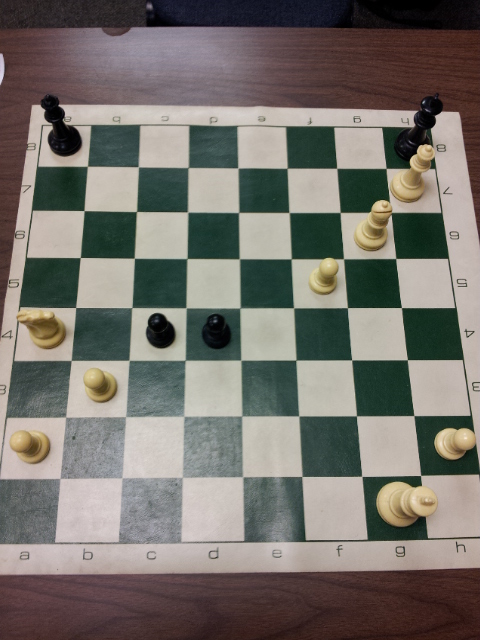
This week’s chess theme is sacrifice in chess. The reason is that in my game, there were many possible points of sacrifice on my end (the attacker), but also, ironically, my opponent was the one who twice sacrificed material for a defensive purpose. Although the sacrifices were not sound, they had some practical merit that I will discuss.
My complete annotated game
At your convenience, you can enjoy playing over the game with my annotations, including diagrams.
Preparation
I knew ahead of time that my opponent was going to be John Ahlborg, whom I have played once before in a game that I won, also as White.
So my “preparation” consisted of nothing other than deciding to play a different opening against him. I should note that I inherently enjoy exploring different ways of playing, so avoidance is not really the purpose, but is actually my excuse to play differently.
Overview of my game
The opening
John reacted to my English Opening surprise in an unexpectedly passive if solid way, allowing me permanent pressure against his d Pawn:
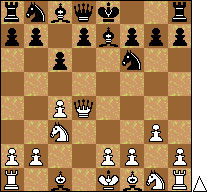
We both played a bit stereotypically in the opening, missing chances for an aggressive advantage or counterplay, but instead reached a completely thematic position:
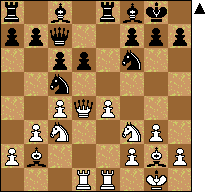
Black has a passive but actually very solid position. The only way White can possibly make progress is reorganize and find a way to launch a King side attack with f4 and g4 eventually, while Black should obtain counterplay on the Queen side.
The middlegame
However, my opponent faltered by not playing on the Queen side but instead trying to get counterplay by redeploying the King Knight to e5:
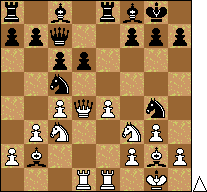
I correctly punished this error by bringing my Knight to h4 aiming to go to f5.
We reached a position that is beautiful for White:
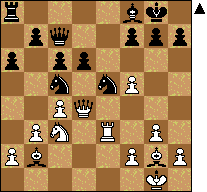
White not only has the two Bishops, but also has the f5 Pawn controlling e5 as well as ready to participate in a Pawn storm involving g4 and then either f6 or g6. Black’s two Knights optically look active but have no real threats at all.
The first sacrifice was for counterplay
At this point, my opponent decided to engage in an unsound sacrifice but one he felt could give him activity and open lines, playing b5.
However, after I took the Pawn and returned my Knight to c3, it became clear that the only open lines were for my Bishop pair, and Black is objectively lost.
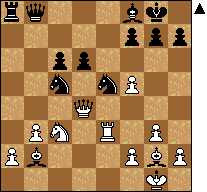
The only question was, how to conduct the winning attack on Black’s King?
I got in g4, and then hesitated to play g5 immediately. I decided to “prepare” for the inevitable attack more slowly.
Potential attacking sacrifices
It turns out from computer analysis that the quickest wins involve immediately pushing forth with g5 and having ideas of throwing everything at Black’s King, possibly sacrificing a Knight or Bishop here or there in order to tighten the net around the King while swinging the Queen and Rook over to the h file. See the annotated game for some sample lines. Here is an example position involving a g6 sacrifice and a possible sacrifice on d5:
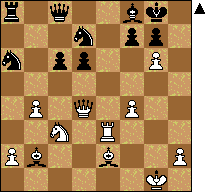
Critical position
The actual game continuation led to a critical position:
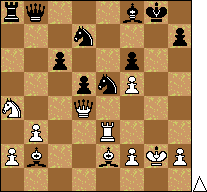
An opened up position like this tends to be critical because
- the attacker has made a commitment to the attack and therefore has made some concessions, possibly overreaching, possibly inadvertently freeing the defender by opening up lines
- the defender was formerly cramped but now has some space, ironically, and perhaps can use the space to bring in more defenses
It turns out that while I did not continue most precisely, my opponent also did not choose the best defense, so we reached a position that is very bad for Black because a piece will soon be lost:

The second defensive sacrifice
My opponent chose an interesting practical try, sacrificing the Knight for an attempt to block White’s dark Bishop and advance some Pawns and lock out White’s stray Knight:
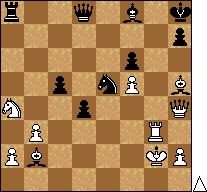
Objectively, White has a totally won game. But at this point, time was running low for both sides.
Under time pressure, I missed a quick win at one point. I also somehow walked into a less and less winning position, eventually hanging an exchange inadvertently!
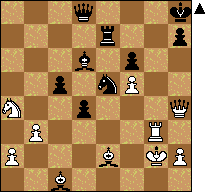
But under worse time pressure, my opponent did not see the win of an exchange (after which White is luckily still winning because he was a piece up originally) and completely collapsed, playing into this lost position:

Checkmate followed:
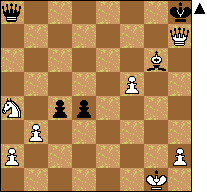
Lessons learned from my game
- Being passive right out of the opening can be very challenging for a human player because it requires playing very precisely in order to maintain the balance
- Defensive sacrifices may be unsound but may disrupt things sufficiently that your opponent could make an error (after the first one I did not but after the second one I did)
- Time pressure, as usual, drastically lowers the quality of chess play
What next?
For round 5, I will be Black against Peter Jansen, who ended up winning his game against Kurt Wallnau on Saturday. I have played a tournament game with him only once before, six years ago, when I was White. I was not at all happy with how I played that game, even though I won (although on time in a drawn position), so I consider our game Tuesday to be my chance to finally actually play well against Peter. I have seen how he plays in the opening, so there’s not going to be an opening surprise coming from him, I think, as White. We will take the battle to the middlegame.
Conclusion
Despite some inaccuracies on my part, I played more consistently in this game than I have recently, so I felt fairly happy about this game. Of course, I had cooperation from my opponent.
